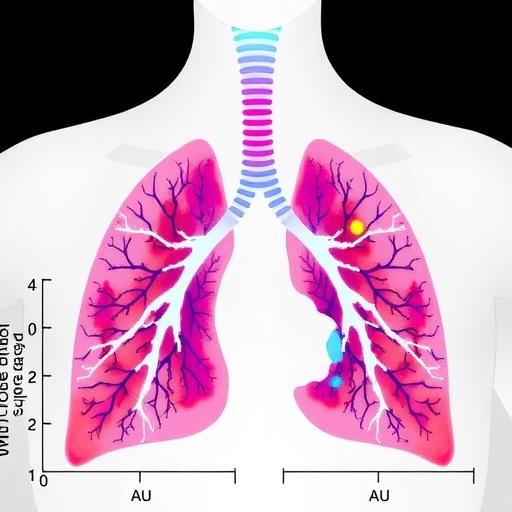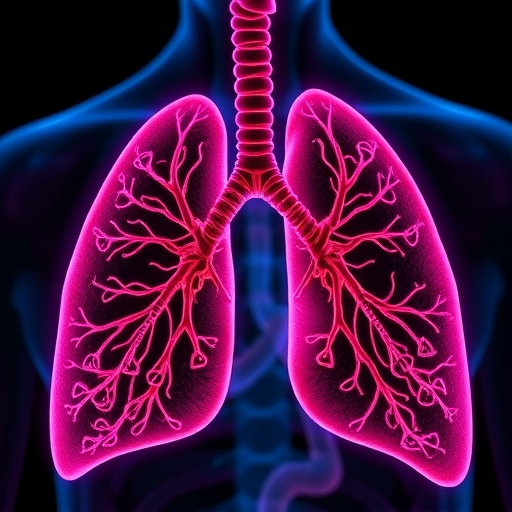
In a groundbreaking study published in Pediatric Radiology, researchers have sought to unravel the complex interactions between anesthesia practices and metabolic processes in children. The focus of the research was on the impact of fentanyl premedication on brown fat uptake during a warming protocol for fluorodeoxyglucose positron emission tomography (FDG PET). This is particularly significant given the pivotal role of brown adipose tissue in thermogenesis and energy metabolism, particularly in pediatric populations where maintaining body temperature during medical procedures is crucial.
The importance of effective management of body temperature during FDG PET scans cannot be overstated. Pediatric patients are particularly susceptible to hypothermia, which can adversely affect diagnostic accuracy. The conventional approach has often involved warming techniques, which aim to counteract heat loss during imaging procedures. However, the study presented a novel angle by assessing how premedication with fentanyl might alter the metabolic processing of brown fat in these scenarios.
Fentanyl, a potent synthetic opioid, has become a common component of premedication protocols in pediatric anesthesia due to its efficacy in pain management and sedation. However, the research team sought to explore whether its inclusion would inadvertently impact the metabolic activity of brown fat—a type of adipose tissue that plays a critical role in maintaining body temperature by burning calories. Their hypothesis centered on whether fentanyl could either enhance or inhibit the uptake of FDG by brown fat during the warming process.
To investigate this hypothesis, the researchers conducted a series of controlled trials, administering fentanyl to a cohort of pediatric patients scheduled for FDG PET scans. Simultaneously, they measured the uptake of FDG in brown adipose tissue using advanced imaging techniques. The methodology was meticulous, ensuring that various variables such as age, weight, and baseline metabolic rates were adequately controlled to yield reliable results.
The findings revealed that the addition of fentanyl premedication had a statistically significant impact on brown fat uptake. Children who received fentanyl displayed altered patterns of FDG uptake compared to those who did not. These results suggest that fentanyl premedication may influence the metabolic response of brown adipose tissue during the procedural warming phase, potentially complicating the interpretation of PET scan results.
Moreover, the implications of this study extend beyond the immediate context of FDG PET imaging. The interaction between anesthetic agents and metabolic processes in brown fat opens new avenues for understanding how premedication can modulate energy expenditure in children. Given that childhood obesity is a growing public health concern, insights gleaned from this research could inform broader discussions about metabolic health and the management of pediatric patients under anesthesia.
The researchers emphasized the need for further studies to elucidate the underlying mechanisms by which fentanyl affects brown fat metabolism. Questions remain regarding the dosage required for optimal sedation without negatively impacting thermoregulation and metabolic processes. Furthermore, the study highlighted the necessity of individualized approaches to pediatric anesthetic practices, accounting for variability among children in terms of physiological responses to drugs.
In the context of the ongoing discussions about opioid use among pediatric populations, this research offers critical data that could inform safer anesthesia protocols. While fentanyl is effective, its potential effects on metabolic pathways must be carefully considered in clinical practice. As physicians weigh the benefits and risks of opioid premedication, the findings from this study could serve as a guiding framework for decision-making.
As the field of pediatric radiology continues to evolve, studies such as this underscore the importance of integrating basic science with clinical practice. The interplay between pharmacology and metabolism is intricate, necessitating a comprehensive understanding of how anesthetics can shape the physiological responses of young patients. Researchers encourage multidisciplinary collaborations to advance knowledge in this area, combining insights from radiology, anesthesiology, and pediatric care.
In conclusion, the study led by Lukulay et al. presents a compelling case for reevaluating anesthetic protocols involving fentanyl in pediatric settings. By showing that fentanyl premedication can impact brown fat uptake during a warming protocol for FDG PET, the research raises important questions about the implications for imaging practices and patient care. The results emphasize the need for continuous inquiry into the effects of medications used in pediatric anesthesia and their broader metabolic consequences.
As awareness of the intricacies of pediatric anesthesia grows, it is essential for clinicians to stay informed of emerging evidence. This research not only highlights a previously underexplored aspect of anesthetic practice but also calls for vigilance in ensuring that the safety and well-being of pediatric patients remain at the forefront of medical advancements.
Subject of Research: Impact of fentanyl premedication on brown fat uptake in children during FDG PET.
Article Title: Does the addition of fentanyl premedication impact brown fat uptake in children undergoing a warming protocol for FDG PET?
Article References:
Lukulay, M., Debnath, P., Anton, C. et al. Does the addition of fentanyl premedication impact brown fat uptake in children undergoing a warming protocol for FDG PET?.
Pediatr Radiol (2025). https://doi.org/10.1007/s00247-025-06381-5
Image Credits: AI Generated
DOI: https://doi.org/10.1007/s00247-025-06381-5
Keywords: Pediatric Radiology, Brown Fat, Fentanyl, FDG PET, Anesthesia.
Tags: brown adipose tissue functionbrown fat metabolism in childrenenergy metabolism in kidsFDG PET scan warming techniquesfentanyl premedication effectshypothermia risk during medical proceduresmetabolic processes in childrenopioid impact on metabolismpediatric anesthesia practicespediatric radiology research findingssedation and pain management in pediatricsthermogenesis in pediatric patients






